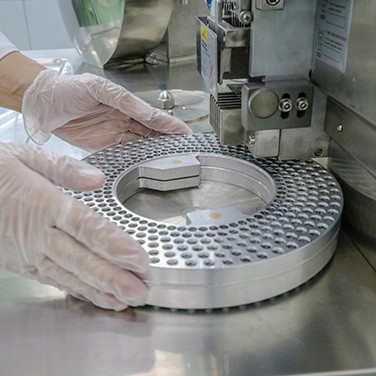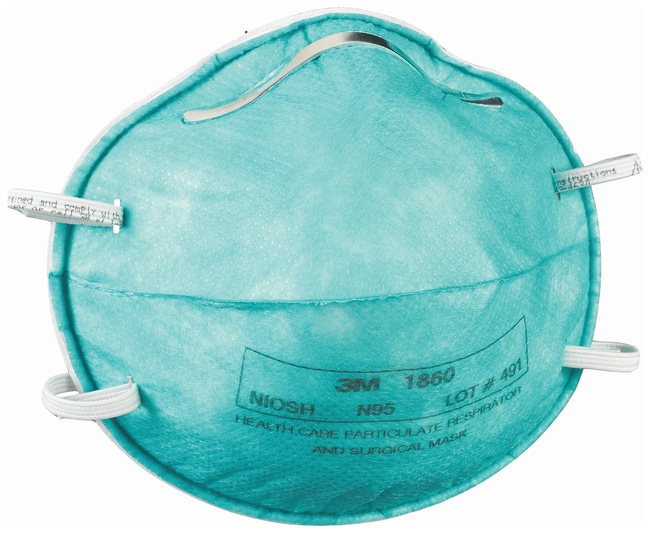Be Prepared for USP <800> with the Right Respiratory Equipment
By Carly Engels Johnston, Personal Safety Division Senior Journalist, 3M
The U.S. Pharmacopeia (USP) explains updated practice and quality standards for handling hazardous drugs (HDs) in USP Convention General Chapter <800> Hazardous Drugs — Handling in Healthcare Settings. These new guidelines promote not only patient and healthcare worker safety but also environmental protection, and they’re expected to go into effect in December of 2019. While there’s still time to prepare for the new standard, it’s important to understand and begin preparing for it now, especially the requirements for respiratory protection.
Background on USP Effective Dates
The revised USP <800> standard was originally scheduled for implementation on July 1, 2018. However, the USP delayed the publication and enforcement of USP <800> to coordinate with the December 1, 2019 publication of the General Chapter <797> Pharmaceutical Compounding — Sterile Preparations standard revision. This provides a more unified approach to compounding practices overall.
Although additional time is available for adopting sections of the revised chapter <797>, the USP strongly encourages early adoption and implementation of USP General Chapter <800> to help protect public health and safety in healthcare settings.
The Respiratory PPE Component
USP <800> includes guidelines for the use of personal protective equipment (PPE) — such as gloves, gowns, and head, hair, and shoe covers — when compounding sterile and nonsterile HDs. Despite what some may think, surgical masks do not provide adequate respiratory protection against the hazards of exposure to certain drugs.
Particulates and aerosols are the primary concerns for airborne exposure, and NIOSH-approved particulate respirators can help limit this exposure when used correctly. Exposure is potentially present during:
- Handling, unpacking, and inspecting supplier HD shipments
- Cutting, crushing, or manipulating HD tablets or capsules
- Compounding HD formulations
- Administering HDs to patients
- Handling patient body fluids that contain HDs or metabolites
- Addressing HD spills or leaks
- Deactivating, decontaminating, and cleaning inside and around engineering control work surfaces, including biosafety cabinets and laboratory ventilated hoods
- Cleaning patient rooms and bathrooms and handling HD-contaminated laundry
- Handling HD-contaminated wastes
Respiratory PPE may also be needed to help protect against unsafe exposure to neutralization chemicals, such as bleach (sodium hypochlorite) and peroxide-based (peracetic acid) cleaners. Particulate respiratory protection alone may not address the unpleasant odor of these chemicals, but a combination particulate cartridge with an acid gas absorbing carbon filter can help.
Choose your respiratory protection based on your hazard and exposure assessments as well as the engineering and administrative controls you have in place. Compare the capabilities and features of disposable, reusable, and powered air-purifying (PAPR) respirators. And keep in mind, too, the importance and impact of proper fit testing.
The National Center for Biotechnology Information has noted that the use of PAPRs in healthcare settings is increasing. One reason for this increase may be the fit test requirement for tight-fitting disposable or reusable respirators. According to the Occupational Safety and Health Administration (OSHA), employers must perform these tests at least once per year:
"A fit test tests the seal between the respirator’s facepiece and the employee’s face. It takes about fifteen to twenty minutes to complete and is performed at least annually. After passing a fit test with a respirator, you must use the exact same make, model, style, and size respirator on the job."
PAPRs, on the other hand, use hoods and head tops, offer loose-fitting options that can accommodate many full beards, and do not require a fit test.
Multiple types of respiratory PPE can help you achieve USP <800> compliance, including:
- Surgical N95 respirators worn with safety goggles
- Reusable full-face respirators with particulate (P100) filters, particulate (P100)/organic vapor/acid gas cartridges, or particulate (p100)/multi gas cartridges
- PAPRs with a particulate (HEPA) filter or particulate (HEPA)/organic vapor/ acid gas cartridge
For each part of the standard, USP <800> requires someone to be designated to help oversee implementation of USP <800> procedures and compliance. This includes evaluating the processes for selecting and using PPE and determining the protection level needed for compliance. Along with other respirator users, the designee must carefully review and follow all user instructions for respiratory PPE. That person is also responsible for consulting with manufacturers and distributors during the PPE selection process to help ensure compliance and proper PPE use.

Content provided by:




